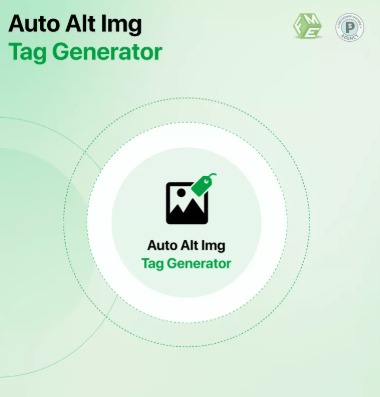In the mobile-first era, e-commerce platforms are no longer just about selling—they’re about engaging, informing, and building trust with users. Blogs have emerged as a key way to connect with customers, improve SEO, and offer value beyond product listings. For PrestaShop store owners, integrating a blog into your storefront is now easier than ever, thanks to the PrestaShop blog module.
This module enables you to publish blog posts, share news, announce promotions, and provide helpful content—all directly within your online store. As responsive design becomes the standard, your blog must not only look good on all devices but also perform well in search engine rankings. In this guide, we’ll walk you through setting up and using the PrestaShop blog module, keeping mobile usability and SEO in mind.
Why Blogging Matters in a Mobile-First E-commerce World
Responsive design is more than just a layout consideration—it’s a strategy for survival in an online space where mobile users dominate. Over 50% of global web traffic now comes from smartphones. Users expect content to load fast, display well, and be easy to engage with.
A well-maintained blog offers multiple advantages:
-
Drives organic traffic through keyword-rich content.
-
Keeps your website fresh and active—key for SEO.
-
Helps build authority and trust with visitors.
-
Offers a platform for product education and industry insights.
-
Supports internal linking strategies for better site structure.
When aligned with responsive design, your blog content becomes a powerful asset to your online store.
Choosing the Right Blog Module for PrestaShop
While PrestaShop doesn’t include a native blog by default, you can install a third-party module easily. Several modules are available on the PrestaShop Addons Marketplace, with both free and paid options. When choosing a blog module, make sure it offers:
-
Mobile-responsive blog layouts.
-
SEO features like custom URLs, meta tags, and rich snippets.
-
Easy-to-use post editor.
-
Category and tag management.
-
Integration with your theme and multi-language support.
Select a module that aligns with your store’s theme and supports fast loading to preserve a mobile-first experience.
How to Set Up the Blog Module
Setting up the module is straightforward. Here’s a step-by-step guide:
1. Install the Module
-
Go to your PrestaShop Admin Panel.
-
Navigate to Modules > Module Manager.
-
Click Upload a Module, then select the blog module ZIP file you downloaded.
-
Install and activate the module.
2. Configure Basic Settings
Once installed, head over to the module’s configuration panel. Here, you can:
-
Set blog title and description.
-
Choose display options like sidebar visibility or grid/list layout.
-
Enable or disable comments.
-
Configure social sharing options.
Keep mobile responsiveness in mind—opt for minimalist, lightweight designs that load quickly on smartphones and tablets.
3. Create Categories
Organizing your blog posts into categories makes navigation easier for users and helps search engines understand your content structure. Create clear, logical categories such as:
-
Tips & Guides
-
Product Tutorials
-
News & Updates
-
Customer Stories
Each category should have a clean, SEO-friendly URL structure and responsive design elements that adapt across devices.
Writing SEO-Friendly Blog Posts
Content optimization is crucial for gaining visibility in a mobile-first, search-driven world. A blog that performs well on mobile but lacks SEO structure will still struggle to attract traffic.
Use These Best Practices:
-
Keyword Integration: Use relevant long-tail keywords naturally throughout your content.
-
Alt Tags for Images: Always use alt text for blog images to improve SEO and accessibility.
-
Header Hierarchy: Use H1, H2, H3 tags properly for content structure.
-
Short Paragraphs: Mobile users prefer concise, scannable text.
-
Internal Linking: Link to products or other blogs within the content to guide users deeper into your site.
-
Custom Meta Descriptions: Write compelling meta descriptions for each post to improve click-through rates in search results.
Well-optimized blog content improves your site’s authority and relevance in Google’s mobile-first indexing.
Mobile Optimization for Blog Content
Even the best-written blogs won’t matter if they’re hard to read on mobile. Responsive design ensures your content flows properly across different devices and screen sizes.
To Make Your Blog Mobile-Friendly:
-
Use responsive themes that support the blog layout.
-
Choose a font size and color scheme suitable for small screens.
-
Ensure images scale appropriately (use percentage widths).
-
Test blog pages on mobile devices using tools like Google’s Mobile-Friendly Test.
-
Minimize load time by compressing images and avoiding unnecessary scripts.
Mobile optimization increases dwell time and reduces bounce rate, two metrics that can significantly impact SEO rankings.
Managing Your Blog Content Effectively
Consistency is key. Set a content calendar that matches your store’s rhythm—whether it’s once a week or twice a month. Keep your blog relevant to your niche and audience.
Some blog ideas for PrestaShop stores include:
-
Product care guides
-
How-to tutorials
-
Seasonal gift ideas
-
Behind-the-scenes brand stories
-
Case studies and customer feedback
Also, ensure your older posts remain updated. Refresh outdated information, add new internal links, and revise content to keep it aligned with current SEO standards.
Measuring Success and Adjusting Strategy
Once your blog is live, it’s important to track its performance. Use tools like:
-
Google Analytics: To monitor user behavior, time on page, and bounce rates.
-
Google Search Console: To analyze keyword impressions, CTR, and indexing issues.
-
Heatmaps: To see how users interact with blog content on mobile devices.
These insights will help refine your strategy, improve content layout, and identify topics that resonate with your audience.
Conclusion
Adding a blog to your PrestaShop store can greatly enhance your digital presence, especially in a mobile-first world where users value responsive, content-rich experiences. By setting up and managing the prestashop blog module effectively, you provide your visitors with relevant information, improve your SEO performance, and create a more engaging customer journey.
With mobile optimization at the core, your blog becomes more than just a content tool—it becomes a vital pillar of your responsive design strategy and search visibility goals.









